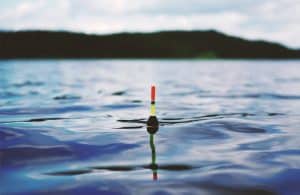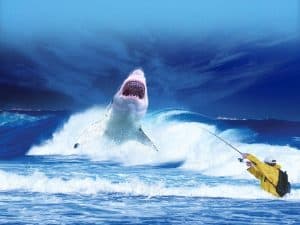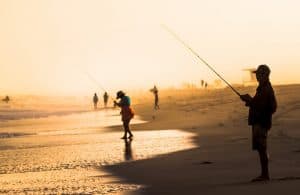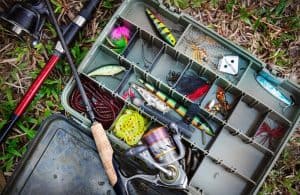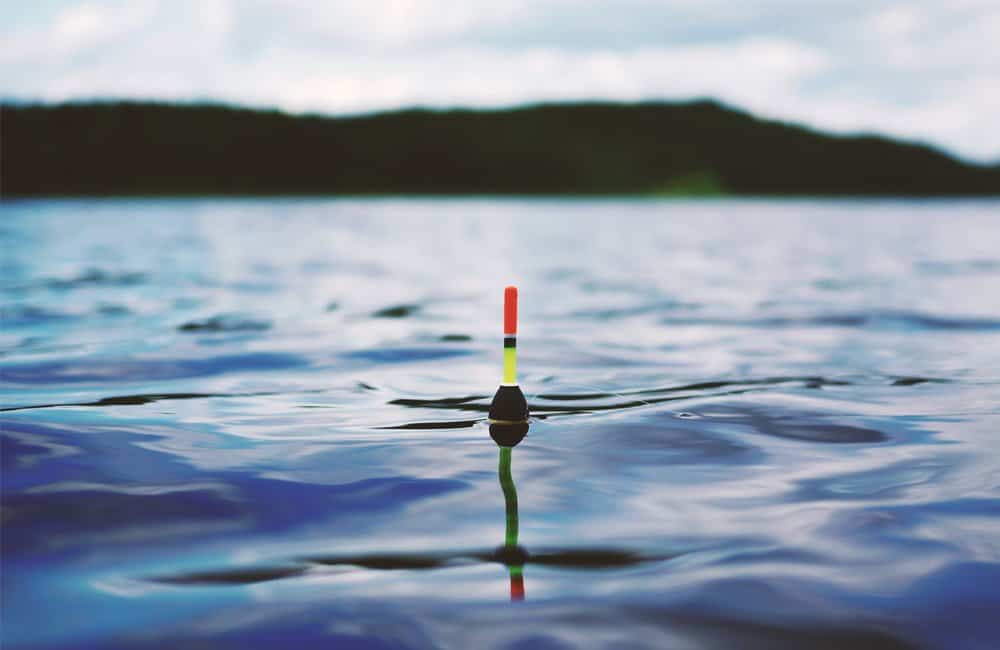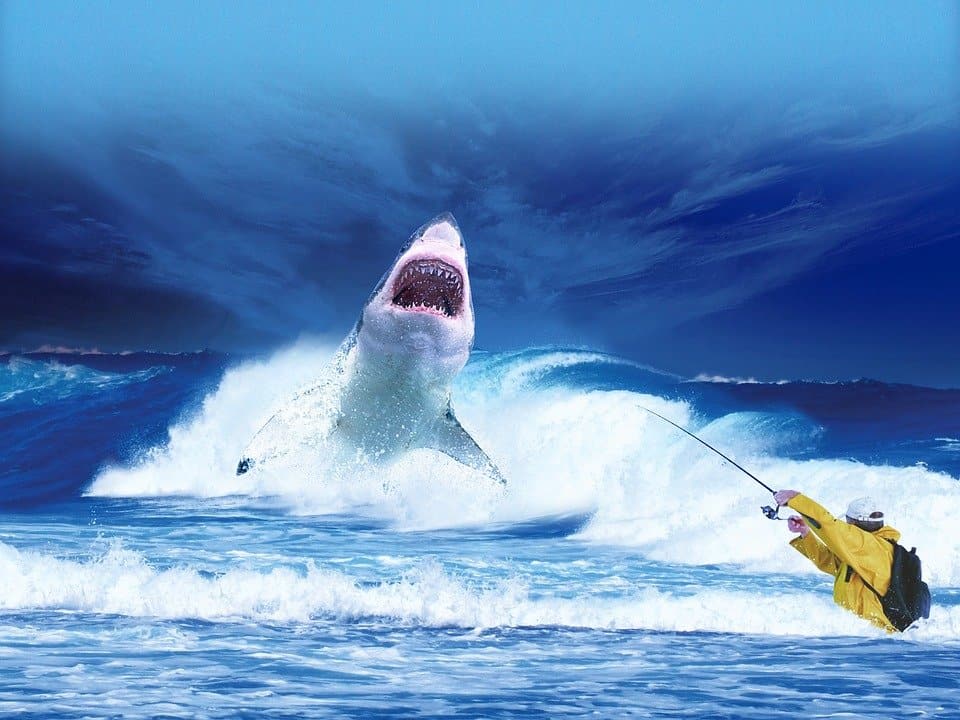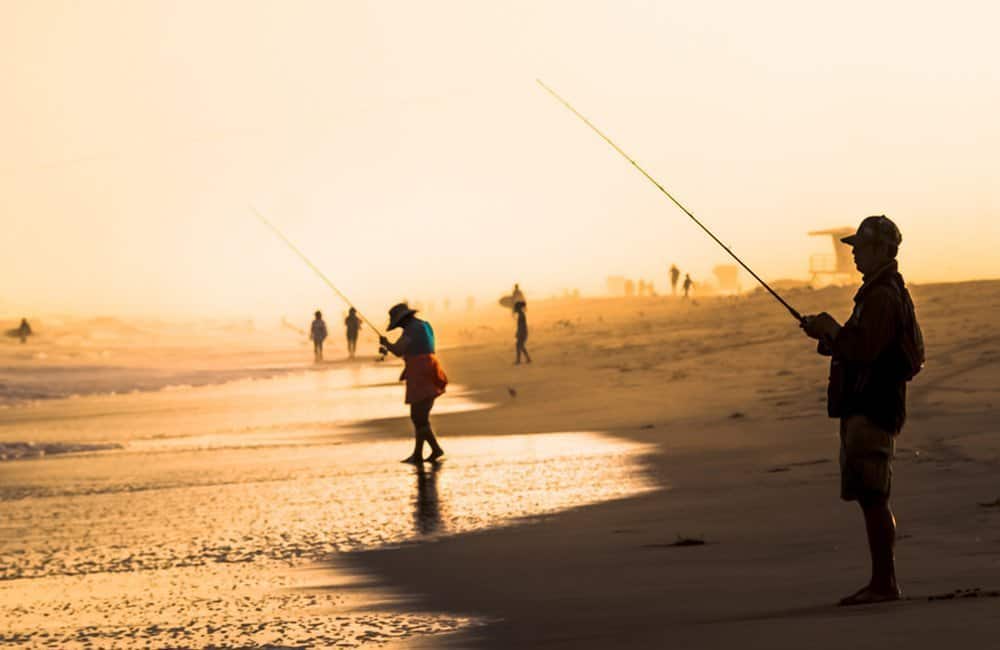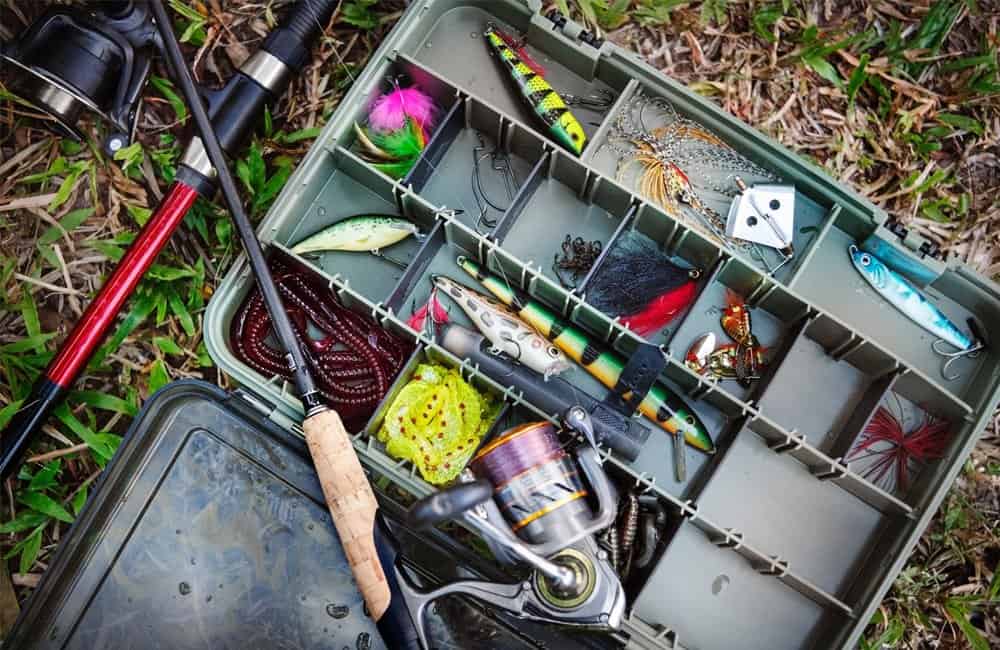If you want to learn how to start surf fishing, then you should read this article. It has all the information you need to get started. Surf fishing is a fun activity that anyone can enjoy. If you are looking for a new hobby, then you should consider learning how to start surf fishing.
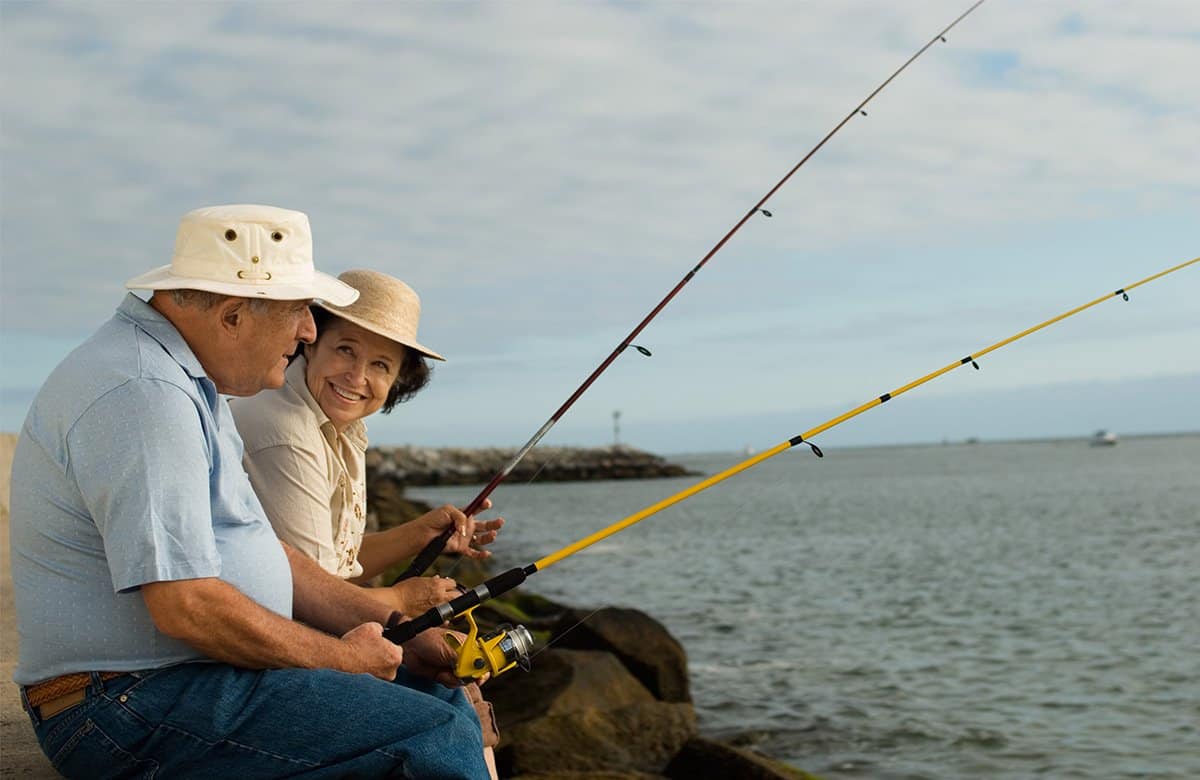
If you want to learn more about what is surfing, continue to read the article below.
What Is Surf Fishing?
Surf fishing is a form of saltwater fishing that is entirely separate from the traditional method, chartering a boat and going out into the deep sea portions of our oceans on the hunt for some of the biggest, angriest, and most challenging game fish anglers have ever attempted to catch.
Instead, as a surf angler, you’re going to be setting up shop right on the beach and tossing your line out into the surf – and usually beyond where the waves start to break – while fishing for the same kind of “monsters of the deep” people pay hundreds if not thousands of dollars to charter boats to go after.
A restful, relaxing, and – as soon as you get that first strike – immediately exciting method of fishing, you’re able to soak in everything that the natural beauty of our oceans has to offer without having to get anything more the on your toes wet if you don’t want to.
A really easy angling hobby to get into, as well as one of the least expensive ways to jump right into saltwater fishing, surf fishing gives you an opportunity to get serious – or remain as playful – about this form of fishing as you like.
There isn’t a mountain of money you have to blow on fancy gear and equipment, and you don’t need a boat, but you will need to take advantage of a couple of prime surf fishing tips (we share plenty of them below) if you’re going to really the kind of saltwater game fish that people go crazy about!
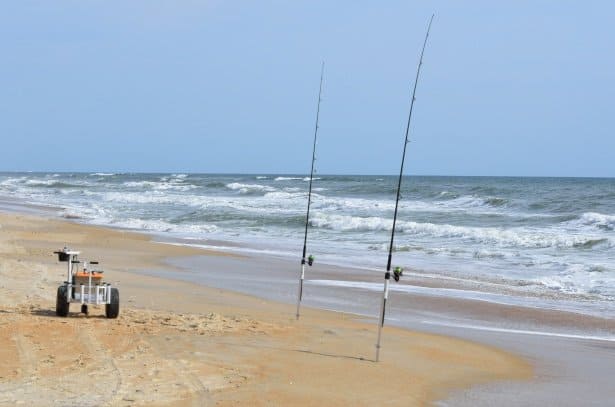
What You Need For Surf Fishing?
You’ve probably heard that fishermen love to blame their gear when they aren’t getting any bites, never even considering the fact that maybe it’s the fishermen themselves that are holding them back in the first place!
And while you could probably do reasonably well in any local pond, river, or stream with any old rod and reel set up and a bucket of worms has bait, surf fishing is an entirely different animal altogether. You’re going to need some surf fishing gear right out of the gate (particularly when it comes to your rod and reel combination).
Even though you don’t have to fish the deepest depths of the ocean to bring in some pretty fantastic fish (flounder, redfish, and blues can be scooped up a lot closer to shore than you’d ever expect and make for pretty good eating, too) you are going to need to be able to shoot a line – pretty heavy line, at that – out into the surf and your standard eight-foot or nine-foot fishing pole isn’t going to have enough muscle to get the job done.
No, instead you’re going to need to plan your hands on a surf specific fishing rod that can be anywhere between 9 feet and 15 feet in length (typically). These rods give you plenty of extra leverage to fire out heavy-duty line deeper into the ocean and beyond where the surf starts to break, right where you want to plop your bait when you are going after saltwater fish.
As a beginner, it’s not a bad idea to stick to a slightly smaller surf fishing rod in the 10 foot to 12 foot range. That will give you something to “grow into” as you get more and more experienced while at the same time not forcing you to learn how to cast in a brand-new style of fishing on a 15 foot monstrosity.
Look specifically for surf rods that have “medium heavy” power and “medium” action. They won’t be particularly bouncy and will even be a little on the stiffer side of things, but that’s going to help you fire your line out beyond the wave breaks.
There’s no need to drop a mountain of money on a saltwater spinning reel. You certainly don’t have to spend more on this fishing tackle than you would on a used Honda Civic the way that some serious anglers and professionals will.
A solid saltwater set up should be able to withstand everything that the salty sea throws at your metal reel, protecting the action while giving you a smooth amount of drag that you can set and control. Some surf fishermen love baitcasting reels that are a little bit more complex, but beginners should probably stick to your more traditional spinning gear set up. It’ll feel a lot more familiar if you’ve done more conventional fishing.
You’ll also want your new saltwater reel to be set up with a high quality, high test fishing line. Regular old monofilament will work wonders as your “main line”. But if you’re looking to spring a little bit for next-generation stuff, the fluorocarbon line you can get your hands on today is about as good as it gets – plenty strong but more lightweight and flexible than any monofilament could ever hope to be.
Look for something in the 20 pounds to 25 pounds test area, or even a little bit stronger if you’re going after particularly gamy fish that like to run.
Your shock leader is a major piece of the puzzle and you want to make sure you have plenty of it attached to your primary line. Similar in concept to the kind of leader you’d find for fly fisherman, this leader is designed to absorb the stress that heavy-duty casts are going to have on the line – the kinds of casts necessary to fire that bait hundreds of yards out into the ocean.
Fun Outdoor Quiz
Some people set up a few different leaders at the end of their mono or fluorocarbon line, but that’s really more advanced stuff that you’ll only want to fool around with after you’ve gotten the hang of a standard leader set up.
Another few bits and pieces of tackle and tool will help you become a better surf angler, including:
- Needle nose pliers that have built-in cutting tools
- A sharp knife and multi-tool
- Sand spikes (3 feet lengths of PVC that can be sunk into the beach while holding your rod right)
- A nice big cooler to keep your catch
- A small “surf buggy” to help you maneuver all of your stuff down to the water
… And that should just about do it.
Of course, it’s not a bad idea to make sure that you have a wide-brimmed hat to protect you from the sun, beach-appropriate shoes ready to rock and roll, and a quality pair of polarized sunglasses to help carve through the inevitable glare that’s going to kick off of the water throughout the day.
Fishes You Can Catch When Surf Fishing
It’s possible to catch pretty much any fish you can imagine when you are starting from the beach and casting out into the surf, though different locations along the coast will give you an opportunity to catch different types of fish – some you’ll only find in selected locales.
In New England (like off the coast of Cape Cod, for example) you can catch everything from striped bass and sea bass to bluefish, cod (no surprise there), winter flounder, mackerel, and more.
Hug the Atlantic Ocean coastline but, a little bit south to the Carolinas and you’ll be able to go after spotted sea trout, flounder, red drum, black drum, and can even do a little bit of surf fishing for sharks if you like!
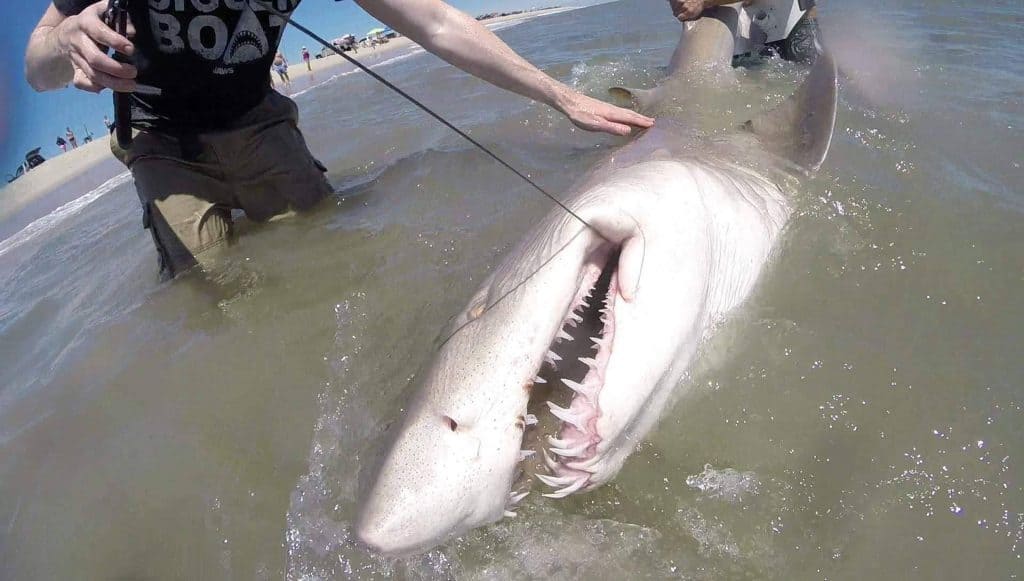
Credit: New Ocean City Shark Fishing Ordinance
Make your way all the way down the Atlantic Ocean coastline to Florida and you’ll start to find yourself pulling in all different kinds of grouper, king mackerel, bonefish. In the Atlantic as well as the Gulf of Mexico you’ll have plenty of opportunities to pull all different types of shark – all from the safety and comfort of the beach!
Head over to the West Coast and fish off of beaches on the Pacific Ocean and you’ll be able to fish for striped bass, California halibut, red tail, surf smelt, leopard sharks, bat rays, and yellowfin croakers – and that’s just the tip of the iceberg!
The opportunities are almost endless, giving you a chance to go after some elusive game fish without having to blow a small fortune on charter boats and deal with all the headache and hassle those kinds of angling trips inevitably bring to the table.
Best Saltwater Lures for Surf Fishing
The overwhelming majority of beginners to the world of surf fishing are going to be using live surf fishing baits or cut bait, most often attached to a “sinking rig” that not only gives your bait a lot of play to attract fish but also makes sure that it maintains the right depth to go after the kind of fish you’re hoping to haul on shore.
Live Lures
Squid or mullet, shrimp and sand fleas, clams and bloodworms are just some of the live surf fishing bait options that surf fishermen love to use when they are going after fish from the beach. Baitfish can also be used if you’re going to be targeting more predatory fish that are going to be on the hunt for these little squirmers, but there’s a reason why you can’t walk past ten surf fishermen without stumbling over at least eight quid or shrimp buckets.
Artificial Lures
Artificial lures have always been a big piece of the puzzle when it comes to traditional fishing, but they don’t get a lot of love with the surf angler community. For one reason or another of these lures just aren’t as useful as cut bait or live bait is, though every now and again you will be able to mix things up with crankbaits, plugs, jigs, or good old-fashioned spoons and catch so many fish from the beach that you’ll be wondering why you ever fool around with live bait in the first place!
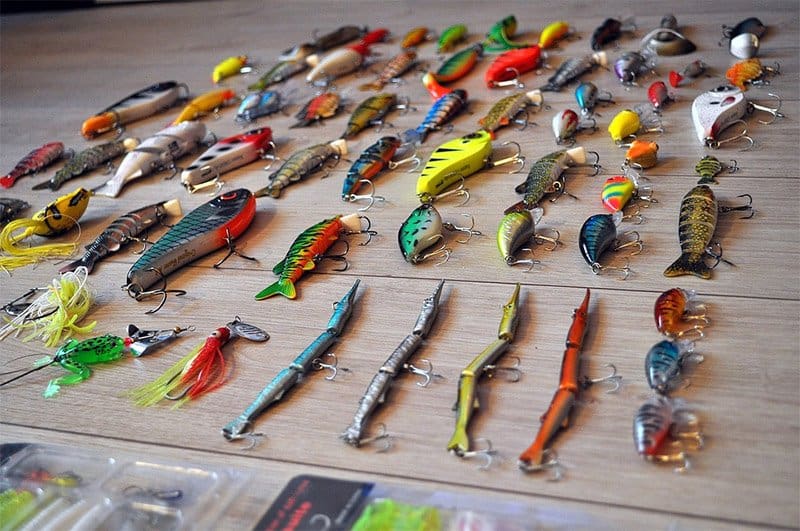
It’s not a bad idea to have a handful of these ready to be deployed from your tackle box as a general rule, shaking things up a little bit if you find the bait you are using hasn’t been getting the job done.
You’ll also want to make sure that you’re using circle hooks as a beginner, mostly because they are going to be able to hook the fish almost on autopilot.
It is critically important when you’re going to have to haul in maybe 200 yards of line if you’re fishing out in the surf. You’d never know when you’d have a strike otherwise, and a circle hook makes sure that no fish grabs your bait and pulls a runner.
Treble hooks can be used as well, but they are more for experienced surf anglers and people that want to monitor their line and their poll every second that it’s out in the ocean. If you’re looking for a more active angling experience that these are probably the hooks for you.
If instead, you want to be able to kick back and relax while your bait, line, rod, and reel handles all of the heavy liftings for you, you’ll want to be set up with circle hooks instead.
Best Tide For Surf Fishing
A thorough and complete understanding of the tides will always position you for success while surf fishing.
Learning the best time to surf fish will make a world of difference, whereas ignoring the tides – or the natural currents of the stretch of water you’re looking to fish – will have you wondering why your prey isn’t biting, even though you’ve been told that the spot your fishing is a “honey hole”.
As a general rule, the most productive stretch of time you’ll have when surf fishing is right at the beginning of an incoming tide. This is when you’re going to see some of the bigger game fish making their move, mostly because of the lack of strong currents makes smaller baitfish a lot more active.
Larger tides throughout the day are also going to be more productive. These long stretches of tide timelines have stronger currents that pull food from the seabed and push it into the water column that game fish are most likely found in, giving you an opportunity to catch more fish than you might have otherwise.
It’s also important to remember that the larger, more predatory game fish are going to wait until just before nightfall to start getting active. This is when they are going to come up closer to the surface, when they are going to be a lot more active, and when you’re going to have an opportunity to hook those real monsters that would have been almost impossible to catch throughout the daylight hours.
Anglers have had a lot of success fishing when the moon is full in the middle of the night, too. You want to pay attention to tides (getting in on the action as the tide comes in or just as the tide is letting out), but with a full moon above and you’ll find that the fishes you are looking for are a lot more active than they would have been otherwise.
Popular Locations For Surf Fishing
You’ll able to squeeze in a little bit of surf fishing along pretty much any stretch of ocean, from the coldest waters in the North Atlantic off the coast of Maine all the way down to the super warm waters off the Florida Keys – and all up and down the West Coast as well!
There are, of course, hotspots around the US you’ll want to check out if you’re serious about the sport. Surf fishing in Florida is on the bucket list of millions of anglers, giving you a chance to go after some pretty big game fish from the shores of this southern state without having to blow a fortune on chartered packages taking your out into the sea.
Other hotspots around the US include:
Hilton Head in South Carolina
The chance to fish for mahi-mahi, kingfish, and even sharks from the beach here is impossible to beat.
Cape Cod in Massachusetts
Seabass, bluefish, tuna, and more can all be hooked and reeled in all up and down this favorite vacation spot in New England.
Montauk in New York
The largest commercial fishery in New York, and home to some of the best anglers on the planet, you’ll never want for opportunities to surf fish when you visit the stretch of Long Island.
Charleston in South Carolina
A quick tour south of Hilton head, Charleston has miles and miles of beaches you’ll be able to cast out from in some of the best fishing conditions year round you’ll find anywhere in the US.
Chesapeake Bay
The bay stretches over 64,000 mi.² with an almost endless amount of opportunities to squeeze in some surf fishing.
But as we mentioned above, any stretch of beach gives you an opportunity to do a little bit of surf fishing whether or not it’s considered a “hotspot” by other anglers.
The important thing to do here is to learn how to go about reading water correctly and finding the right place to set up shop. This gives you a chance to cast in many different directions and have a good shot at catching fish in each of them without having to move up and down the beach is a critical skill to master.
This is going to take a little bit of time to develop, but every time you hit the beach, you’ll learn of the more about what to look out for and what kinds of spots to avoid. Don’t be shy about reaching out to your fellow surf anglers for tips and tricks. They remember what it was like to be a new be and most are more than happy to get others hooked on a sport they are passionate about themselves.
Look for spots that have a couple of anglers already setting up shop, but make sure that you don’t crowd them. Get in the same general vicinity with say 50 yards or 100 yards of space between you and the next angler, giving you both plenty of water to “work” without any overlap or spooking of the fish your all after.
Saltwater tides and the weather, as well as the general topography of the beach and ocean you are fishing, are going to have a significant impact on fish hotspots and stretches of beach where you can do absolutely everything right and not see a single strike for hours and hours on end.
Time of day is another big piece of the puzzle, especially during the hotter months of the year. If you’re going to be fishing in the middle of July or August, you’ll want to get out as early as you can or in the late afternoon/early evening, timing it so that your fishing while the tides are moving and the temperatures are relatively cold.
Get your hands on a set of topographical maps or depth maps for the water you plan on fishing and you’ll have almost x-ray vision to find the fish you are after. Deep holes with shallow inlet areas are always going to hide some pretty decent sized fish looking to enjoy a “safe harbor”. Dropping your bait inside these holes can result in landing some pretty big monsters without a lot of effort.
Jetties are another spot you’re going to want to be on the lookout for. Rocks are going to offer a lot of structure for small crustaceans and baitfish, the kind of grand buffet that a lot of saltwater fish are going to sniff out and gorge themselves on pretty much around-the-clock.
Once you locate the structures you’ll want to fish every side of them you can reach, trying different depths on your leader to see where fish are in the water column – always on the hunt for active feeders.
Is It Illegal To Go Surf Fishing At Any Shores/Beaches?
The overwhelming majority of states and municipalities along both coasts of the United States (the states that have coastlines along the Gulf of Mexico) have different rules and regulations about fishing in general – but most of them do not have separate rules, laws, or regulations that pertain specifically to surf fishing.
You’ll obviously need to purchase a fishing license for the state that you are going to be fishing in (most of these are available at any bait shop, department store, hardware store, etc). Some fisheries and beach lines are going to request you to purchase “stamps” that permit you to fish in those specific waters for a particular stretch of time.
This is all done with conservation in mind, helping to protect our waters and one of our greatest natural resources from becoming overfished – especially by less than ethical anglers looking to skirt commercial fisherman rules and regulations.
Some locations, like in Big Sur, California and Montauk, New York, for example, are going to have rules and regulations that change every single year. To learn about the rules that may impact surf fishing in the area that you are most interested in tossing some lines in if not a bad idea to visit the Department of Fish and Wildlife for that state or locale just to brush up on the current rules, regulations, laws and potential restrictions.
Private stretches of beach may or may not allow you to fish, and that’s something that you’re going to want to take up with the people that own or regulate those particular stretches of coastline.
Closing Thoughts
At the end of the day, so long as you focus on the fundamentals, we covered above and go into the sport of surf fishing with an open mind and a sense of adventure you’ll find it’s impossible to have anything but a great time.
Surf fishing is a lot less technical than bass fishing on upon and is certainly a world apart from a technical aspect than dry fly fishing. A lot of this sport is “set it and forget it” in its approach, giving you the unique opportunity to relax while you soak up everything that Mother Nature has to offer – out of the beach, no less.
It’s pretty tough to have a bad day at the beach as a general rule, and it’s even tougher to have a bad day at the beach when you are hauling lines out beyond the surf break and to pull in dinner left and right.
Don’t be surprised if you find yourself positively hooked on the sport of surf fishing the very first time you reel in your very own sea monster, and hopefully, our quick guide helps you pull that off sooner rather than later!


